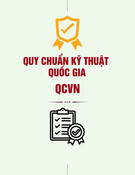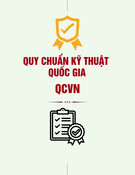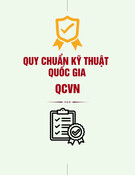
INTERNATIONAL REGULATIONS FOR PREVENTING COLLISIONS AT
SEA, 1972
PART A-GENERAL
Rule 1
Application
(a) These Rules shall apply to all vessels upon the high seas and in all waters connected
therewith navigable by seagoing vessels.
(b) Nothing in these Rules shall interfere with the operation of special rules made by an
appropriate authority for roadsteads, harbors, rivers, lakes or inland waterways connected
with the high seas and navigable by seagoing vessels. Such special rules shall conform as
closely as possible to these Rules.
(c) Nothing in these Rules shall interfere with the operation of any special rules made by
the Government of any State with respect to additional station or signal lights, shapes or
whistle signals for ships of war and vessels proceeding under convoy, or with respect to
additional station or signal lights or shapes for fishing vessels engaged in fishing as a
fleet. These additional station or signal lights, shapes or whistle signals shall, so far as
possible, be such that they cannot be mistaken for any light, shape or signal authorized
elsewhere under these Rules.
(d) Traffic separation schemes may be adopted by the Organization for the purpose of
these Rules.
(e) Whenever the Government concerned shall have determined that a vessel of special
construction or purpose cannot comply fully with the provisions of any of these Rules
with respect to the number, position, range or arc of visibility of lights or shapes, as well
as to the disposition and characteristics of sound-signaling appliances, such vessel shall
comply with such other provisions in regard to the number, position, range or arc of
visibility of lights or shapes, as well as to the disposition and characteristics of sound-
signaling appliances, as her Government shall have determined to be the closest possible
compliance with these Rules in respect of that vessel.
Rule 2
Responsibility
(a) Nothing in these Rules shall exonerate any vessel, or the owner, master or crew
thereof, from the consequences of any neglect to comply with these Rules or of the
neglect of any precaution which may be required by the ordinary practice of seamen, or
by the special circumstances of the case.
(b) In construing and complying with these Rules due regard shall be had to all dangers

of navigation and collision and to any special circumstances, including the limitations of
the vessels involved, which may make a departure from these Rules necessary to avoid
immediate danger
Rule 3
General Definitions
For the purpose of these Rules, except where the context otherwise requires
(a) The word "vessel" includes every description of water craft, including non-
displacement craft and seaplanes, used or capable of being used as a means of
transportation on water
(b) The term "power-driven vessel" means any vessel propelled by machinery.
(c) The term "sailing vessel" means any vessel under sail provided that propelling
machinery, if fitted, is not being used.
(d) The term "vessel engaged in fishing" means any vessel fishing with nets, lines, trawls
or other fishing apparatus which restrict maneuverability, but does not include a vessel
fishing with trolling lines or other fishing apparatus which do not restrict
maneuverability.
(e) The word "seaplane" includes any aircraft designed to maneuver on the water.
(f) The term "vessel not under command" means a vessel which through some
exceptional circumstance is unable to maneuver as required by these Rules and is
therefore unable to keep out of the way of another vessel.
(g) The term "vessel restricted in her ability to maneuver" means a vessel which from the
nature of her work is restricted in her ability to maneuver as required by these Rules and
is therefore unable to keep out of the way of another vessel.
The term vessels restricted in their ability to maneuver shall include but not be limited to
(i) a vessel engaged in laying, servicing or picking up a navigation mark, submarine cable
or pipeline;
(ii) a vessel engaged in dredging, surveying or underwater operations;
(iii) a vessel engaged in replenishment or transferring persons, provisions or cargo while
underway;
(iv) a vessel engaged in the launching or recovery of aircraft;
(v) a vessel engaged in mine clearance operations;
(vi) a vessel engaged in a towing operation such as severely restricts the towing vessel

and her tow in their ability to deviate from their course.
(h) The term "vessel constrained by her draught" means a power-driven vessel which,
because of her draught in relation to the available depth and width of navigable water, is
severely restricted in her ability to deviate from the course she is following.
(i) The word "underway" means that a vessel is not at anchor, or made fast to the shore,
or aground.
(j) The words "length" and "breadth" of a vessel mean her length overall and greatest
breadth.
(k) Vessels shall be deemed to be in sight of one another only when one can be observed
visually from the othen
(1) The term "restricted visibility" means any condition in which visibility is restricted by
fog, mist, falling snow, heavy rainstorms, sandstorms or any other similar causes.
PART B - STEERING AND SAILING RULES
SECTION I - CONDUCT OF VESSELS IN ANY
CONDITION OF VISIBILITY
Rule 4
Application
Rules in this Section apply in any condition of visibility.
Rule 5
Look-out
Every vessel shall at all times maintain a proper look-out by sight and hearing as well as
by all available means appropriate in the prevailing circumstances and conditions so as to
make a full appraisal of the situation and of the risk of collision.
Rule 6
Safe Speed
Every vessel shall at all times proceed at a safe speed so that she can take proper and
effective action to avoid collision and be stopped within a distance appropriate to the
prevailing circumstances and conditions.
In determining a safe speed the following factors shall be among those taken into account
(a) By all vessels
(i) the state of visibility;

(ii) the traffic density including concentrations of fishing vessels or any other vessels;
(iii) the manoeuvrability of the vessel with special reference to stopping distance and
turning ability in the prevailing conditions;
(iv) at night the presence of background light such as from shore lights or from back
scatter of her own lights;
(v) the state of wind, sea and current, and the proximity of navigational hazards;
(vi) the draught in relation to the available depth of water
(b) Additionally, by vessels with operational radar:
(i) the characteristics, efficiency and limitations of the radar equipment;
(ii) any constraints imposed by the radar range scale in use;
(iii) the effect on radar detection of the sea state, weather and other sources of
(vi) the more exact assessment of the visibility that may be possible when radar is used to
determine the range of vessels or other objects in the vicinity.
Rule 7
Risk of Collision
(a) Every vessel shall use all available means appropriate to the prevailing circumstances
and conditions to determine if risk of collision exists. If there is any doubt such risk shall
be deemed to exist.
(b) Proper use shall be made of radar equipment if fitted and operational, including long-
range scanning to obtain early warning of risk of collision and radar plotting or
equivalent systematic observation of detected objects.
(c) Assumptions shall not be made on the basis of scanty information, especially scanty
radar information.
(d) In determining if risk of collision exists the following considerations shall be among
those taken into account:
(I) such risk shall be deemed to exist if the compass bearing of an approaching vessel
does not appreciably change;
(ii) such risk may sometimes exist even when an appreciable bearing change is evident,
particularly when approaching a very large vessel or a tow or when approaching a vessel
at close range.
Rule 8
Action to avoid Collision

(a) Any action to avoid collision shall, if the circumstances of the case admit, be positive,
made in ample time and with due regard to the observance of good seamanship.
(b) Any alteration of course and/or speed to avoid collision shall, if the circumstances of
the case admit, be large enough to be readily apparent to another vessel observing
visually or by radar; a succession of small alterations of course and/or speed should be
avoided.
(c) If there is sufficient sea-room, alteration of course alone may be the most effective
action to avoid a close-quarters situation provided that it is made in good time, is
substantial and does not result in another close-quarters situation.
(d) Action taken to avoid collision with another vessel shall be such as to result in passing
at a safe distance. The effectiveness of the action shall be carefully checked until the
other vessel is finally past and clean
(e) If necessary to avoid collision or allow more time to assess the situation, a vessel shall
slacken her speed or take all way off by stopping or reversing her means of propulsion.
(f) (i) A vessel which, by any of these Rules, is required not to impede the passage or safe
passage of another vessel shall, when required by the circumstances of the case, take
early action to allow sufficient sea-room for the safe passage of the other vessel.
(ii) A vessel required not to impede the passage or safe passage of another vessel is not
relieved of this obligation if approaching the other vessel so as to involve risk of collision
and shall, when takmg action, have full regard to the action which may be required by the
Rules of this part.
(iii) A vessel the passage of which is not to be impeded remains fully obliged to comply
with the Rules of this part when the two vessels are approaching one another so as to
involve risk of collision.
Rule 9
Narrow Channels
(a) A vessel proceeding along the course of a narrow channel of fairway shall keep as
near to the outer limit of the channel or fairway which lies on her starboard side as is safe
and practicable.
(b) A vessel of less than 20 metres in length or a sailing vessel shall not impede the
passage of a vessel which can safely navigate only within a narrow channel or fairway.
(c) A vessel engaged in fishing shall not impede the passage of any other vessel
navigating within a narrow channel or fairway.
(d) A vessel shall not cross a narrow channel or fairway if such crossing impedes the
passage of a vessel which can safely navigate only within such channel or fairway. The
latter vessel may use the sound signal prescribed in Rule 34(d) if in doubt as to the
intention of the crossing vessel.
(e) (i) In a narrow channel or fairway when overtaking can take place only if the vessel to


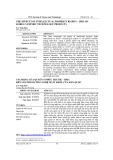
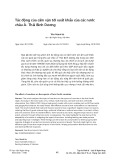
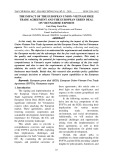

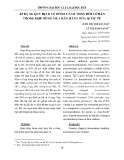

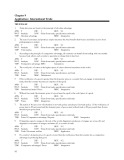
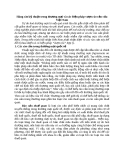
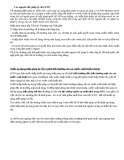
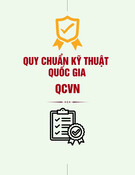
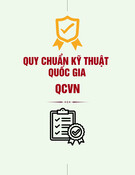

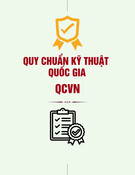
![QCVN 115:2024/BGTVT là gì? [Mới nhất]](https://cdn.tailieu.vn/images/document/thumbnail/2025/20251201/nganga_07/135x160/10941764584507.jpg)

